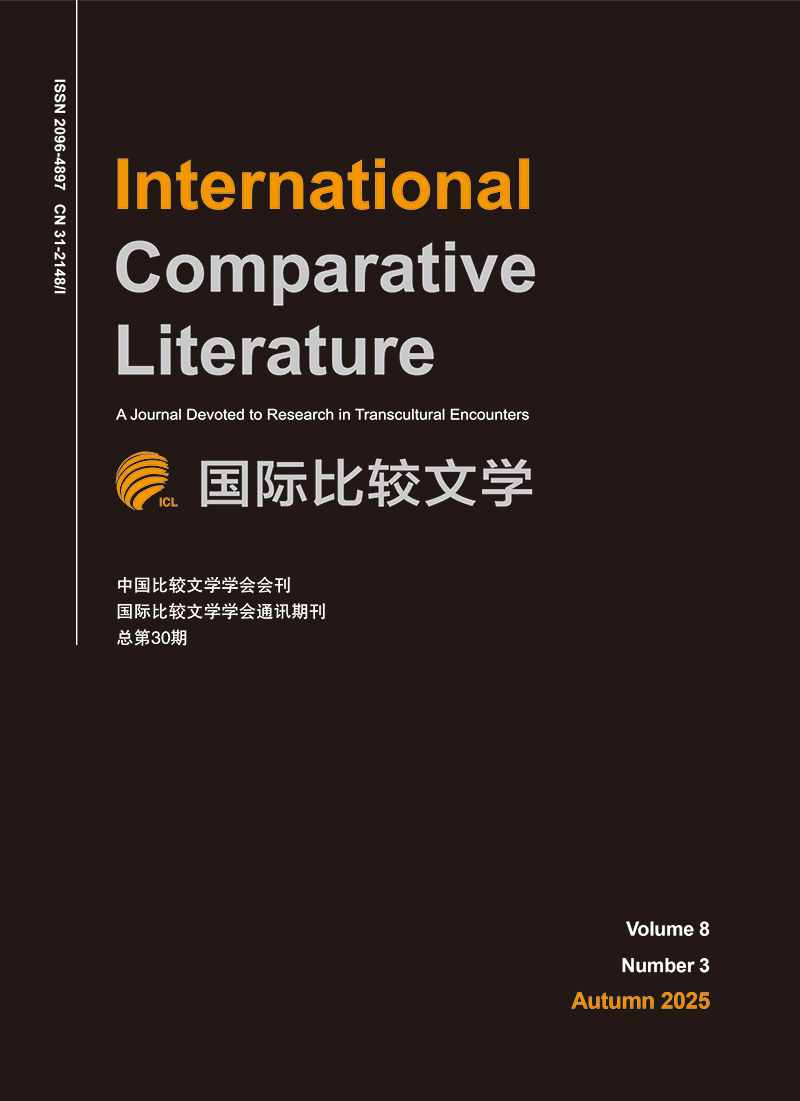|
[1]
|
富士川英郎、松下忠、佐野正巳編:《詩集日本漢詩》,東京:汲古書院, 1985—1990年。
|
|
[2]
|
[Fujikawa Hideo, Matsushita Tadashi, Sano Masami, eds. The Chinese-Style Poems of Japan. Tokyo: Kyouko Syoin, 1985-
|
|
[3]
|
1990.]
|
|
[4]
|
藤本箕山:《新版色道大鏡》,新版色道大鏡刊行会編,東京:八木書店, 2006年。
|
|
[5]
|
[Fujimoto Kizan. The Mirror of Shikidou New Version. Edited by Team of The Mirror of Shikidou New Version. Tokyo:
|
|
[6]
|
Yagi Syoten, 2006.]
|
|
[7]
|
林美一:《艶本江戸文学史》,東京:有光書房, 1964年。
|
|
[8]
|
[Hayashi Yoshikazu. The History of Enpon of Edo Period. Tokyo: Hikari Syobou, 1964.]
|
|
[9]
|
揖斐高:《江戸詩歌論》,東京:汲古書院, 1998年。
|
|
[10]
|
[Iji Takashi. On the Poems of Edo Period. Tokyo: Kyouko Syoin, 1998.]
|
|
[11]
|
伊藤信編:《日本竹枝詞集》,岐阜:華陽堂書店, 1939年。
|
|
[12]
|
[Itou Makoto, ed. The Zhuzhi Ci Poetry of Japan. Gifu: Kayoudou Syoten, 1939.]
|
|
[13]
|
柏木如亭:《詩本草》,揖斐高校注,東京:岩波書店, 2006年。
|
|
[14]
|
[Kashiwagi Jyotei. Materia Medica of Poems. Proofread and Annotated by Iji Takashi. Tokyo: Iwanami Shoten, 2006.]
|
|
[15]
|
永井荷風:《荷風全集》,東京:岩波書店, 1992年。
|
|
[16]
|
[Nagai Kafuu. All Works of Nagai Kafuu. Tokyo: Iwanami Shoten,1992.]
|
|
[17]
|
斎田作楽編:《吉原詞集成》,東京:太平書屋, 1993年。
|
|
[18]
|
[Saita Sakura, ed. The Collection of Yoshiwarashi. Tokyo: Taihei Syooku, 1993.]
|
|
[19]
|
———:《竹枝詞集集成 第二巻》。東京:太平書屋, 2015年。
|
|
[20]
|
[———, ed. The Collection of Zhuzhi Ci Poetry. Vol. 2. Tokyo: Taihei Syooku, 2015.]
|
|
[21]
|
齋藤昌三:《江戸好色文学史》。東京:星光書院, 1949年。
|
|
[22]
|
[Saitou Syouzou. The Literary History of Eroticism of Edo Period. Tokyo: Seikou Syoin, 1949.]
|
|
[23]
|
新谷雅樹:《游仙枕上ノ一夢ナルカナ:柏木如亭の「吉原詞」について》,《藝文研究》第87期, 2004年,第278—
|
|
[24]
|
300页。
|
|
[25]
|
[Shinya Masaki.“Could This Be a Dream on the Pillow of Fairy Playing: On Yoshiwarashi, the Poem by Jotei Kashiwagi.”
|
|
[26]
|
The Geibun-Kenkyu: Journal of Arts and Letters 87 (2004): 278-300.]
|
|
[27]
|
染谷智幸:《遊女·遊廓と「自由円満」なる世界——井原西鶴の『好色一代男』を中心に——》,《日本文学》第49
|
|
[28]
|
期, 2000年,第17—26页。
|
|
[29]
|
[Someya Tomoyuki.“Prostitutes and Their‘ Happy and Content’ World: Reading Ihara-Saikaku’s Koshoku-ichidai-otoko([Special Issue] Prostitutes in the Edo Period).” Japanese Literature 49 (2000): 17-26.]
|
|
[30]
|
———:《「好色」かつ「一代男」たることの至難について——西鶴の隠微——》,《日本文学》第51期, 2002年,第
|
|
[31]
|
62—67页。
|
|
[32]
|
[———. The Difficulty of Being the“One and Only Playboy”: A Hidden Part of Saikaku-Ihara’s Life. Japanese Literature
|
|
[33]
|
51 (2002): 62-67.]
|
|
[34]
|
《天理圖書館善本叢書和書之部第十一巻·游女評判記集》,東京:八木書店, 1973年。
|
|
[35]
|
[The Rare Book Collection of Tenri Library, The Books in Japanese Character vol.11: The Collection of Judging
|
|
[36]
|
Prostitutes. Tokyo: Yagi Syoten, 1973.]
|
|
[37]
|
梅辻春樵:《春樵隱士家稿》,早稻田大学图书馆藏本。
|
|
[38]
|
[Umetsuji Syunsyou. The Works of Hermit Syunsyou. The Collection version of Waseda University.]
|
|
[39]
|
蔡镇楚编:《域外诗话珍本丛书》,北京:北京图书馆出版社, 2006年。
|
|
[40]
|
[CAI Zhenchu, ed. Yuwai shihua zhenben congshu (The Rare Book Collection of Foreign Poetic Remarks). Beijing:
|
|
[41]
|
Beijing Library Press, 2006.]
|
|
[42]
|
《丛书集成续编》,台北:新文丰出版公司, 1989年。
|
|
[43]
|
[Congshu jicheng xubian (The Sequel of the Integrated Books). Taipei: Shin Wen Feng Press Company, 1980.]
|
|
[44]
|
井原西鹤:《浮世草子》,王向远译,上海:上海译文出版社, 2016年。
|
|
[45]
|
[Ihara Saikaku. Fushi Caozi (Ukiyo Soushi). Translated by WANG Xiangyuan. Shanghai: Shanghai Translation Publishing
|
|
[46]
|
House, 2016.]
|
|
[47]
|
刘禹锡:《刘禹锡集》,北京:中华书局, 1990年。
|
|
[48]
|
[LIU Yuxi. Liu Yuxi Ji (The Works of Liu Yuxi). Beijing: Zhonghua Book Company, 1990.]
|
|
[49]
|
藤本箕山、九鬼周造、阿部次郎:《日本意气》,王向远译,长春:吉林出版集团, 2012年。
|
|
[50]
|
[Fujimoto Kizan, Kuni Syuzou, Abe Jiro. Riben Yiqi (Iki of Japan). Translated by WANG Xiangyuan. Changchun: Jilin
|
|
[51]
|
Publishing Group, 2012.]
|
|
[52]
|
王利器、王慎之、王子今编:《历代竹枝词》,西安:陕西人民出版社, 2003年。
|
|
[53]
|
[WANG Liqi, WANG Shenzhi, WANG Zijin, eds. Lidai Zhuzhi Ci (The Zhuzhi Ci of Past Dynasties). Xi’an: Shanxi
|
|
[54]
|
People’s Publishing House, 2003.]
|
|
[55]
|
熊啸:《诗风、世风之变与艳诗在明代及江户的创作》,《中国文学研究》 2017年第2期,第90—103页。
|
|
[56]
|
[XIONG Xiao.“Shifeng shifeng zhi bian yu yanshi zai Mingdai ji jianghu de chuangzuo” (The Changes of Poetic Style
|
|
[57]
|
and Public Morals and the Creation of Amorous Poems in Ming Dynasty of China and Edo Period of Japan). Zhongguo
|
|
[58]
|
wenxue yanjiu (Study of Chinese Literature) 2 (2017): 90-103.]
|
|
[59]
|
叶晔:《竹枝词的名、实文体与中国风土诗歌演进》,《中国社会科学》 2014年第11期,第144—164页。
|
|
[60]
|
[YE Ye.“Zhuzhi ci de ming shi wenti yu Zhongguo fengtu shige yanjin” (Name and Reality in Zhuzhi Ci and the
|
|
[61]
|
Evolution of Fengtu Shi in China). Zhongguo shehui kexue (Social Sciences in China) 11 (2014): 144-64.]
|

 点击查看大图
点击查看大图



 下载:
下载:

